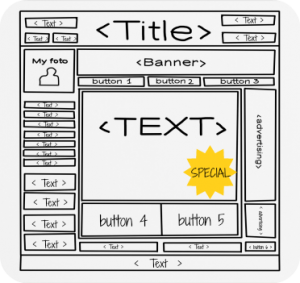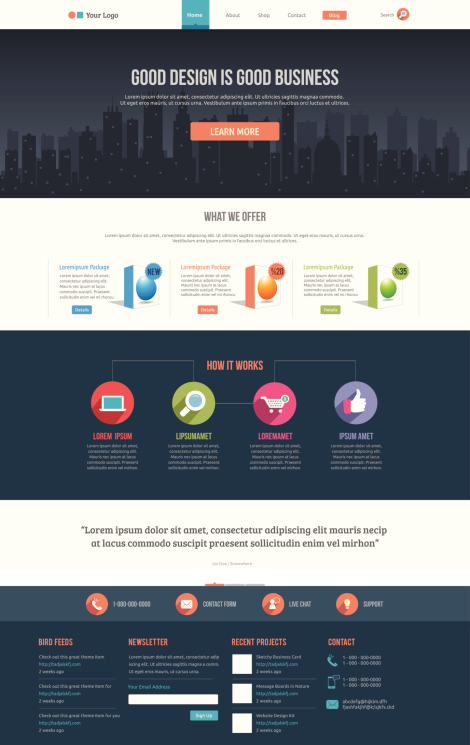
Your website is the face of your company. And in a world of laptops, smartphones, and tablets abound, you know it’s important for your company to have a digital presence now more than ever.
In fact, now 81% of people research products and companies online before deciding to make a purchase and 19% of people want retailers to offer mobile apps for smartphone access.
So you’re ready to join your competitors online. You’ve found a website design company you like and you have told them your plan of what you want the site to look like. So what’s taking so long to get the site live?
At PDR Web Solutions, we regularly see business owners rushing to hit the “Launch” button on their site. To them, the launch is often seen as more important and/or more exciting than the website’s design and underlying functionality.
This is a major problem. In fact, a rushed design without proper structure and poorly-written content will almost definitely hurt your traffic and rankings.
To save you a lot of frustration, here are a number of key factors you should keep in mind to have a successful website launch.
Top 9 Common Website Mistakes Companies Can Easily Avoid
1. Poor Layout
How users’ eyes are directed around the webpage can be a make-or-break quality to your site.
A rushed designer is likely to dump text on the website and avoid splitting up the material into categories, forget headings, and generally leave the material a cluttered mess.
Every webpage should have an easily-identifiable purpose. The text should be simple to navigate and easy to read.Above all, nothing on your website should be unnecessary, incorrect, or feature out-of-date information.
2. Too Much Information on a Single Page
 Website design is moving toward clean, efficient pages. The fastest way to discourage a web user is by cluttering your website with products, descriptions, articles, coupons, the latest blog entry, and whatever else you can imagine.
Website design is moving toward clean, efficient pages. The fastest way to discourage a web user is by cluttering your website with products, descriptions, articles, coupons, the latest blog entry, and whatever else you can imagine.
Smart website design should cover all the bases, but different users will visit your site for differing reasons.
Those seeking expert opinion might visit your blog first. Repeat customers want to be directed to your product page.
Over-informing your customers via blog or other means could result in putting an informed consumer on the market without acquiring their business. Never “skimp” on information, but always leave some room for your customer service team.
3. Hard to Use Navigation
Navigation needs to be intuitive for users. Hyperlinks should be used when a topic is mentioned that users will want to know more about, and links should be re-tested before launch to ensure none of them go to non-existent pages. Dead links are unprofessional and make your site seem outdated.
Every website would benefit by having a search box, especially for bigger websites that feature a good deal of products or content. Google offers a custom search tool that can be placed on your website.
4. Inconsistent Look and Feel
Some designers may branch out and design pages differently for each service offered. This is fine as long as the tone of your business does not change from page to page. Once that threshold is crossed and the consistency of your page disappears, users will be confused and annoyed.
If your blog is a different color from your main website colors, users may wonder if they’re on a different site.
Make sure every part of your website is consistent. Ensure the colors match the business logo and the same font is used throughout the site.
5. No Clear Call to Action
A call to action is like a sales close. You are asking or suggesting to your users to purchase a product, sign up for your email blast, request an estimate, or otherwise contact your company.
All of your site content should be priming consumers for why they should trust you and give you their business, and the call to action is the tagline that tells them the next step.
6. Inability to Match Your Target Demographic
 The design should take your target demographic into consideration. If your business is geared toward older consumers, you will want to use a cleaner, simpler design with a larger font.
The design should take your target demographic into consideration. If your business is geared toward older consumers, you will want to use a cleaner, simpler design with a larger font.
Businesses geared toward younger demographics will likely want to launch their mobile support as soon as possible.
Finding a designer that frequently designs for your market is a safe way to appropriately approach your potential customers.
7. Asking for Too Much, Too Soon
When people visit a website and have to create an account just to view the content, many instantly close the tab and search elsewhere. Likewise, registration forms for emails with a long list of mandatory fields are abhorred by users.
Consumers don’t want to feel vulnerable when visiting a site or be concerned that you will flood their inboxes with useless promotional material. Establish trust with your customers by providing the information and services they want before asking for their personal information.
8. Do-It-Yourself/Easy to Build Designs
Some business owners attempt to launch their own sites or pay a friend to do the job.
Web design is a refined skill just like any other business industry. Many of the issues raised in this post are made by experienced designers. Do you think you can do it better than they can?
What about the content? Google’s search algorithms have become more complicated, pushing aside the old hyperlink and keyword-heavy designs and raising rankings for sites that utilize effective content marketing tactics. Do you know how to write your site material according to those standards?
9. Lack of Trust in Your Website Design Team
Many business owners have an idea in mind of how they would like the site to look and feel, which is generally fairly easy to accommodate. The issues come when some of the client specifications don’t align with industry standards and current best practices for websites.
Trust that the website design firm that you have hired is making their recommendations based on years of analyzing and understanding the digital industry.Experienced designers know how to incorporate your vision without sacrificing your user’s experience (nor Google’s recommendations).
If you have a web company that does use all of your specifications without question, that should probably signal a red flag that industry best practices may not be followed.
Investing in Your New Website
In the end, your website is one of the most important aspects of your business.
To the consumer, the effort that goes into your site reflects the effort you put into the company. Consider whether you can do it on your own, and never push for an early launch.
A site that manages to gain relevant traffic is going to net your business.
Paying for a designer to rush a botched job will simply lead customers to make negative assumptions about the services you offer and start searching elsewhere to satisfy their needs.
This will also lead to future frustration when you realize you have to redesign your site to get it up to industry standards.
If you are looking for web design experts you can count on, advice about launching your website, or to learn how to improve your search rankings and increase business, please contact us online or call us at 410-560-7185.



